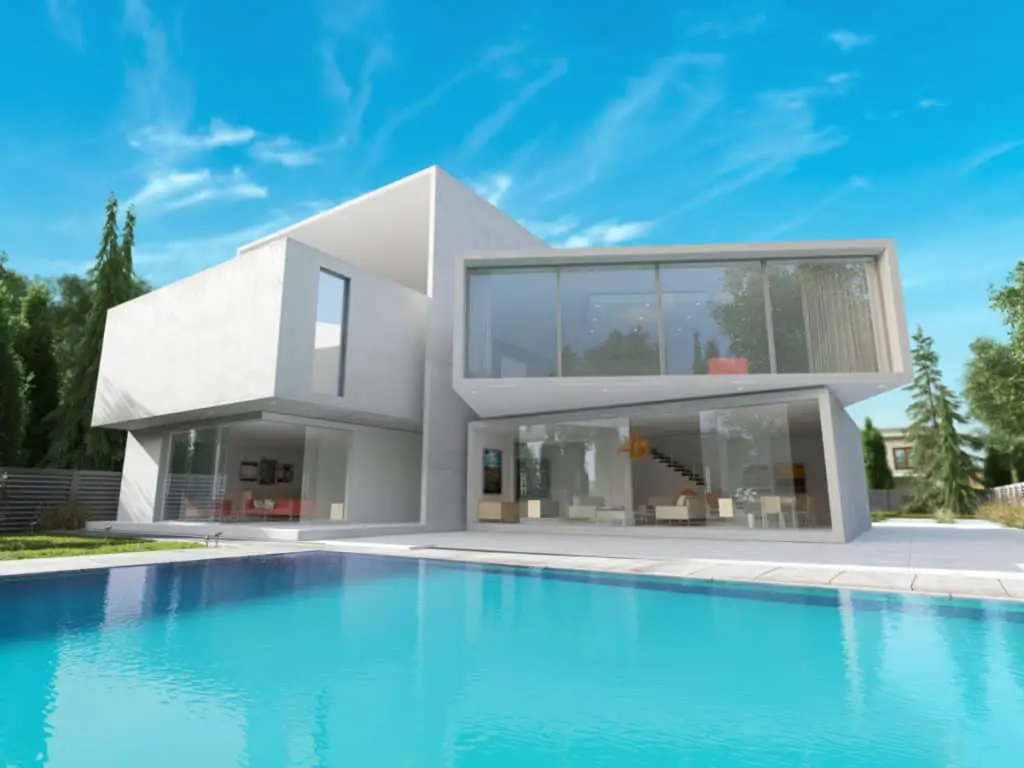If you grew up in a neighborhood full of boring, cookie-cutter houses, you may be looking to build something more exciting for your family. One interesting option is a concrete house- they are stylish, modern, and unique. This may be an appealing idea, but there is always one concern when it comes to building a house: is it a worthwhile investment?
Concrete houses are more expensive to build than typical homes, but they cost much less to maintain over time and are more durable than other homes. Concrete houses also lower the cost of heating and cooling, provide a clean and modern look, and can even lower some insurance premiums.
In short, concrete houses are a worthwhile investment. If you would like to learn more about the benefits of investing in a concrete home, then you are in the right place.

Constructing A Concrete House
When it comes to building a house, the obvious first step is to look at the overall cost of construction.
Concrete houses are much simpler material-wise than typical houses, but their materials are more expensive.
The process of designing a concrete home is much like that of a normal house: find a contractor or builder, draw up a blueprint that details the form and function of every room in the house, and then set an excavation date.
The building process is where things start to differ. Whereas a typical house would start with a wood frame, be formed with insulation, drywall, etc., a concrete house is much simpler.
Related article: Do Concrete Houses Have Studs? What You Need To Know
The site of your house will be excavated and forms to hold the concrete in place will be set up, then concrete will be poured on and around steel reinforcements.
Depending on their size, concrete houses can take anywhere from four months to one year to build. Concrete houses take longer to build because concrete (unlike wood) has to set and cure for a certain amount of time before it reaches its full strength.
Four months to a year is quite a bit longer than it would take to build a typical wood-frame house, but the time is well worth it.
Now, onto material costs.
The U.S. Department of Housing and Urban Development estimates that building a concrete house will cost about $2.00-$4.00 more per square foot than that of a wood-frame house.
So, if you are building a 1,500 square foot wood-frame house, you would pay about $200,000 for construction. If you built that same house with concrete, you would pay about $204,000.
This is not too large of a cost gap between a wood-frame and concrete home, but even this little cost variance makes a huge difference when it comes to the quality of your house.
Maintaining A Concrete House
Once your home is built, you are sadly not finished putting money into it. Every home has heating and cooling bills, insurance costs, and the need to be repaired at times.
When it comes to concrete homes, this is the area in which they shine.

Concrete houses are cheaper to maintain, more durable, and longer-lasting than wood-frame houses, so you can expect to pay quite a bit less to maintain your concrete home than a wood-frame home.
The typical monthly costs of a home are temperature control, insurance, and a mortgage. With a concrete home, all three are cheaper.
Concrete homes can be built in many ways, from using pre-cast blocks to pouring concrete into steel-reinforced forms, but they all have one thing in common: their amazing ability to insulate.
Having a concrete home will save you 20-25% annually on heating and cooling bills.
There are a couple of reasons that is. The first is the uncanny insulation; this will save you a lot in the long run as the temperature you set will be maintained much better than in a wood-frame home.
The second reason is that the insulation allows for smaller heating and cooling units to be installed.
Also read: Should Concrete Walls be Insulated?
When it comes to insurance, many companies will offer you a discount due to your home being concrete!
Concrete is more resistant to fires, tornados, hurricanes, and earthquakes. In many areas of the United States, these natural disasters (and sometimes human-caused accidents like fires) are a huge threat to the security of a home, so insurance companies are happy to discount you for having a unique home.
Discounts offered by insurance agencies for having a concrete home go all the way up to 25% because your structure saves them money in the long run.
A mortgage is also something that you can save on by living in a concrete house. If you buy or build a concrete home, you may qualify for an Energy-Efficient Mortgage (EEM), a mortgage that allows homeowners to qualify for a larger mortgage because of their savings on energy expenses.
For more information on this mortgage, check out the U.S. Department of Housing & Urban Development’s Energy Efficient Mortgage Program.
Getting away from monthly costs are the periodic costs that are caused by mold, rot, and pests. Once again, concrete saves you money in these categories.
The typical wood-frame house is susceptible to its frame rotting due to age, poor moisture moderation, or water damage. Mold can also occur behind the drywall for the same reasons.
When wood rot occurs, you may have to completely reconstruct certain areas, or simply replace some beams. Either way, there will be a hefty price to pay.
Mold damage requires entire areas of drywall to be ripped out and redone- also not cheap.
Concrete homes are safe from both of these things as they have no wood in their frame to rot or for mold to grow on.
Another benefit of concrete homes is their anti-pest nature. Unlike typical homes, concrete houses have fewer places for small mice or other rodents to build nests and live.
They also have no wood for carpenter ants or termites to be attracted to, no small spaces for bugs, and no place for creatures to hide.
This will save you money on extermination and pest control, as well as protect you from the unsavory experience of finding a creepy critter in your house.




